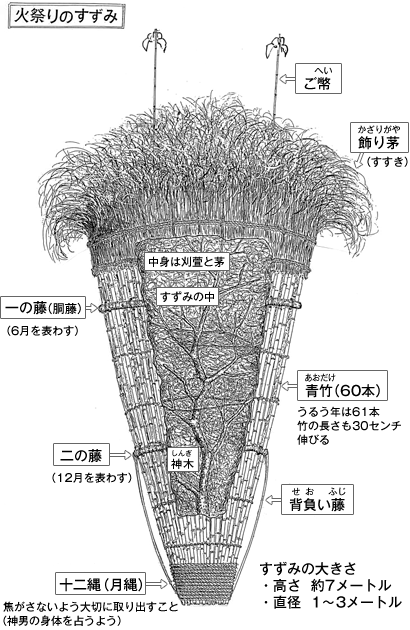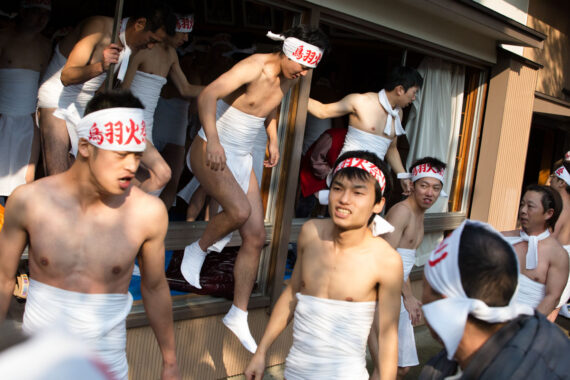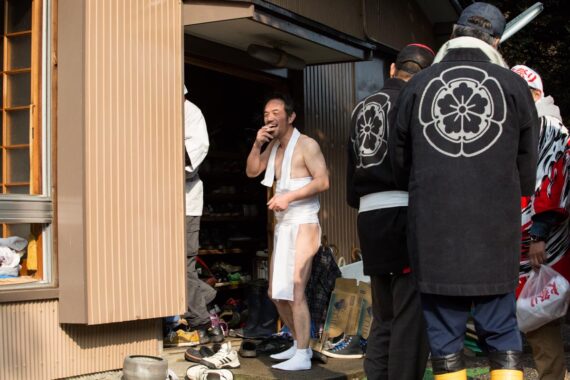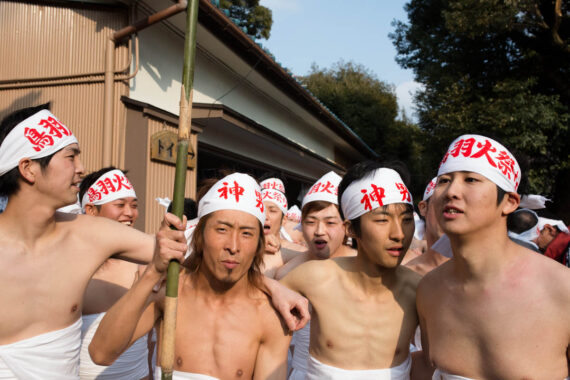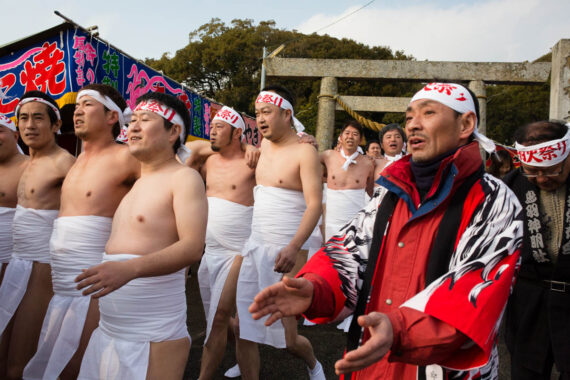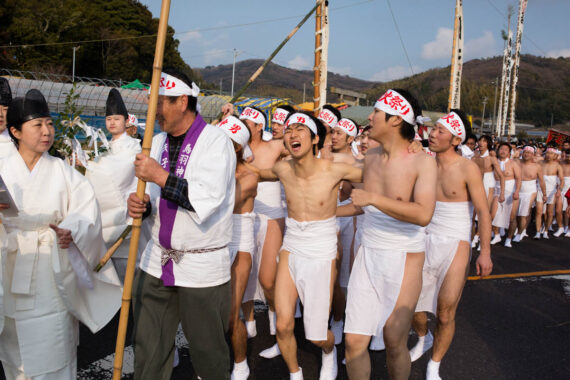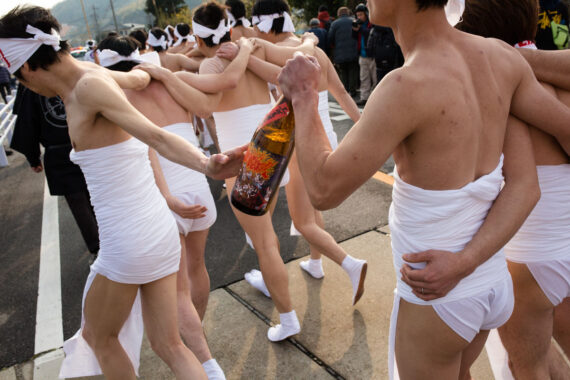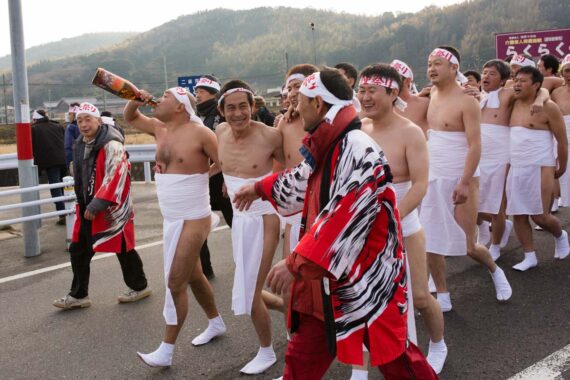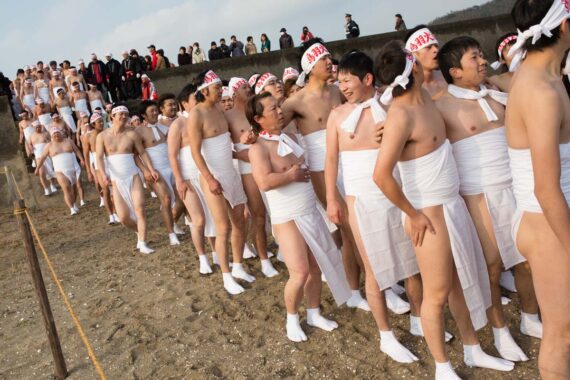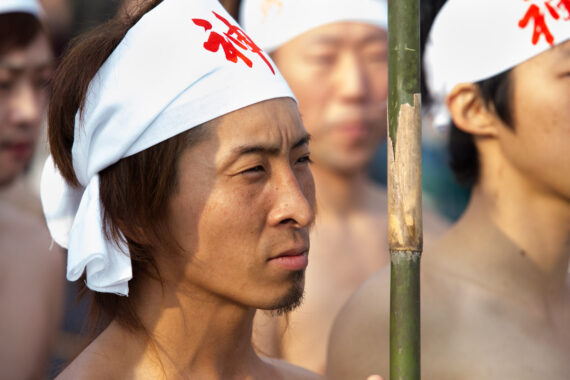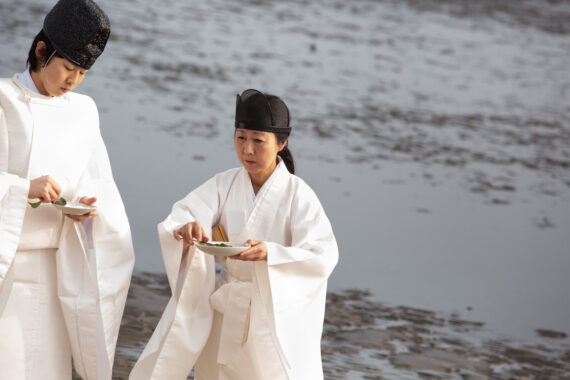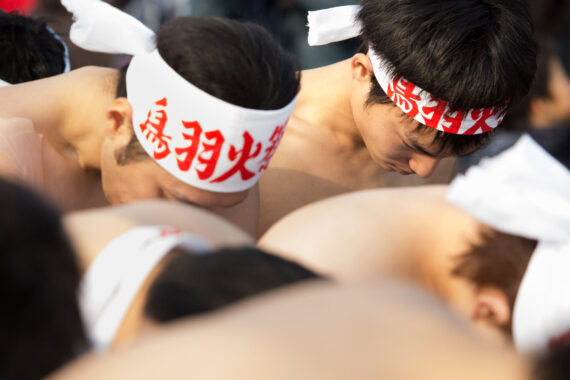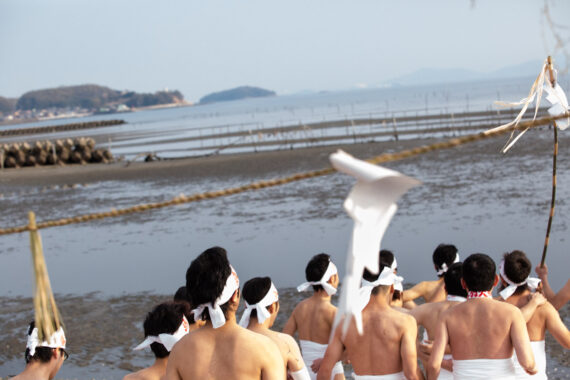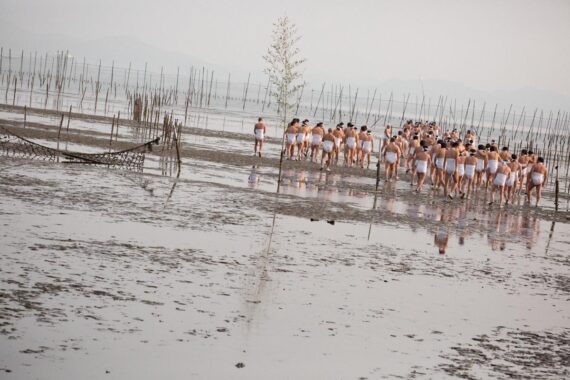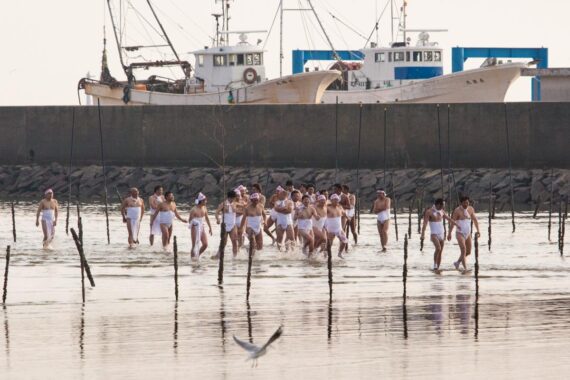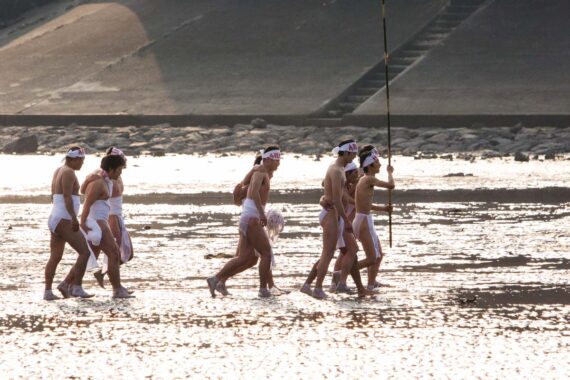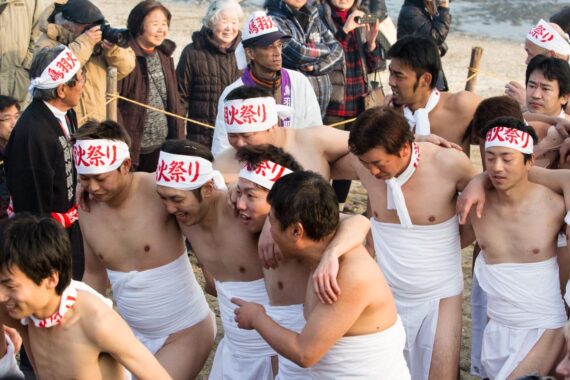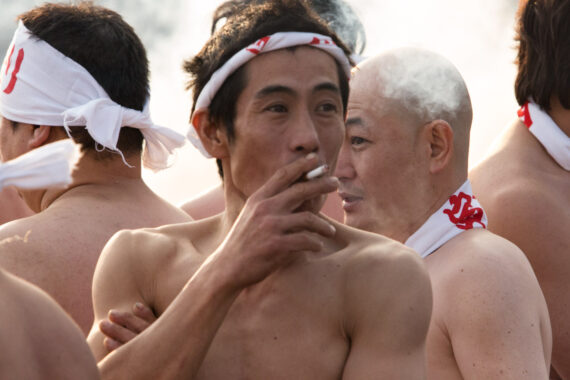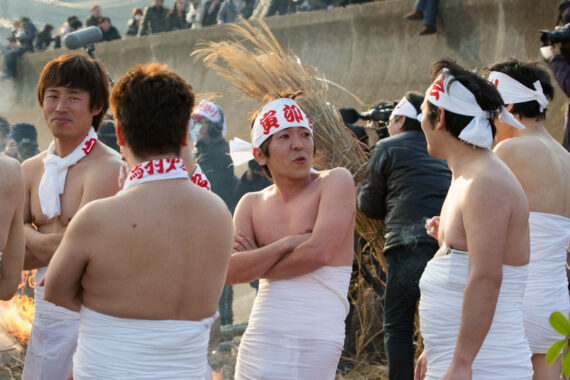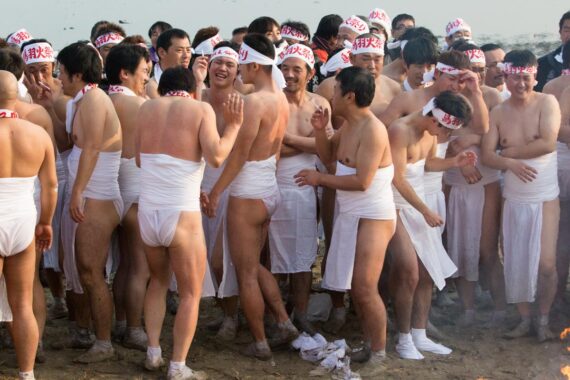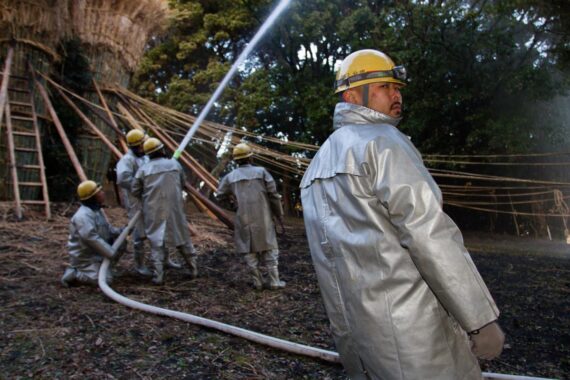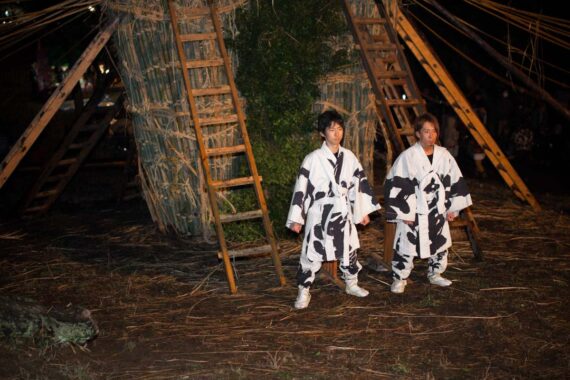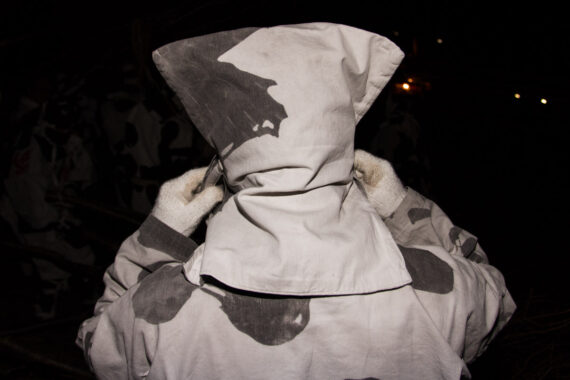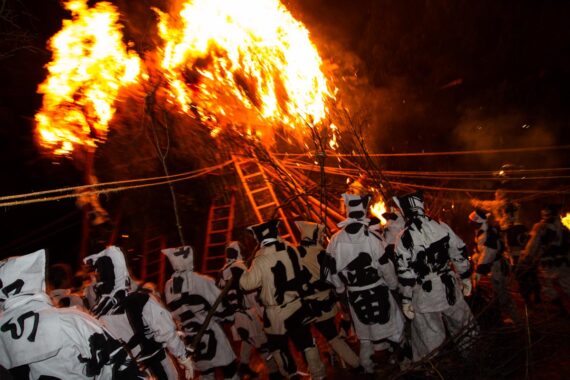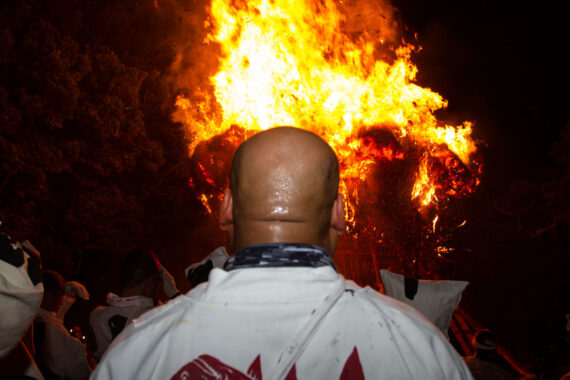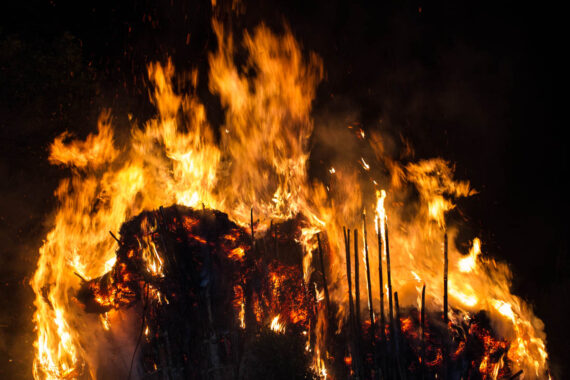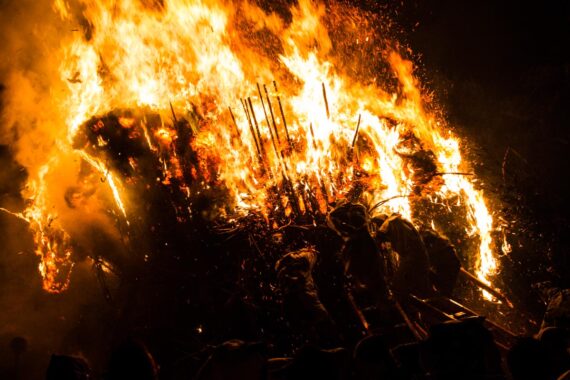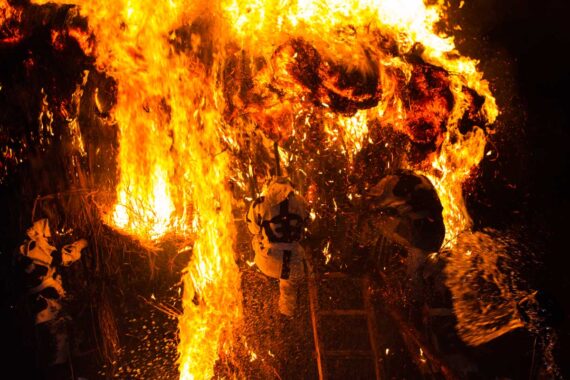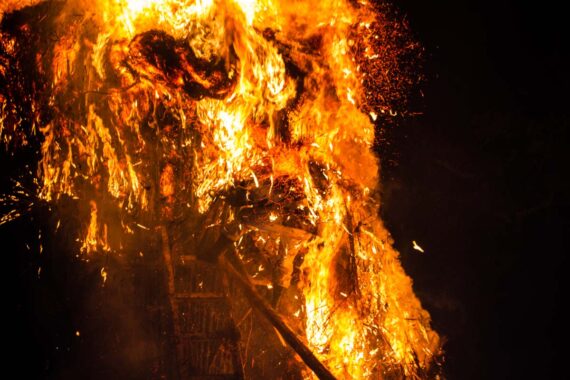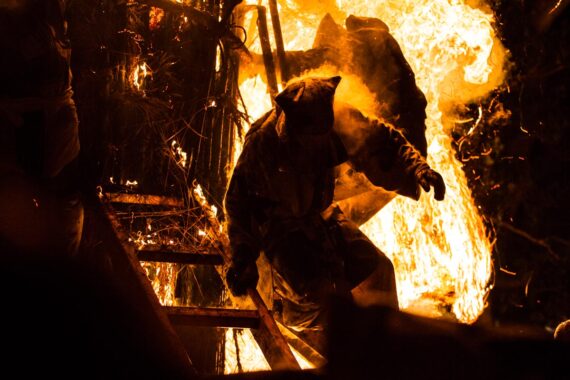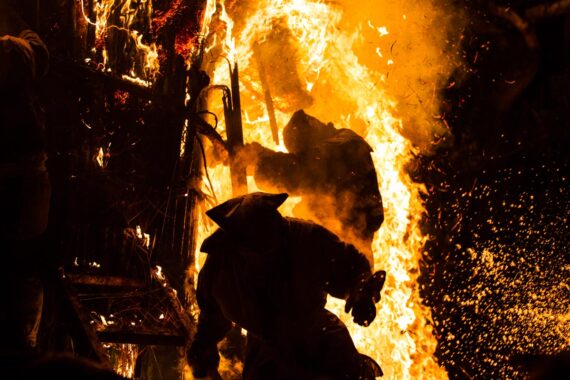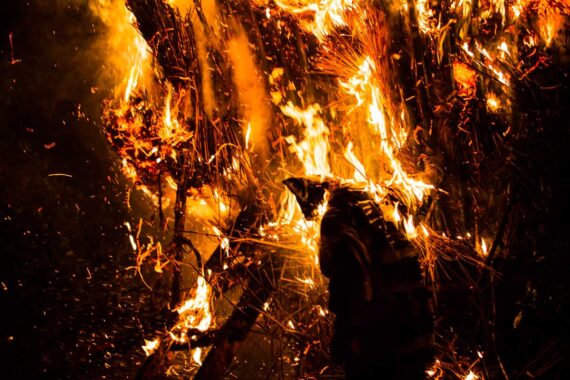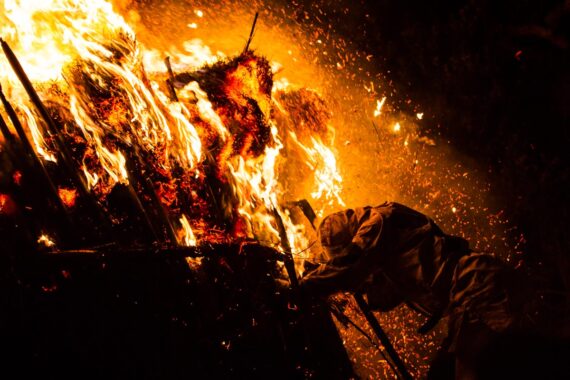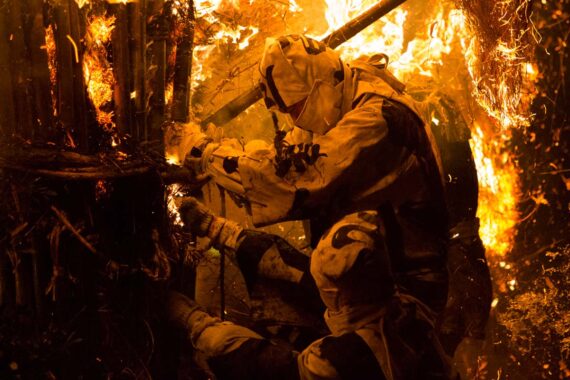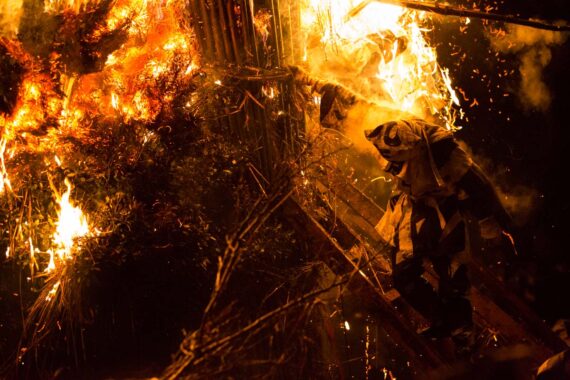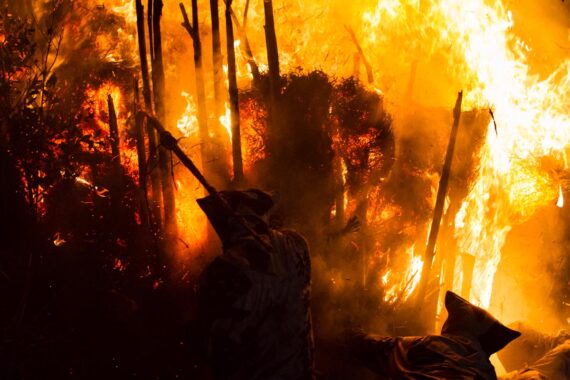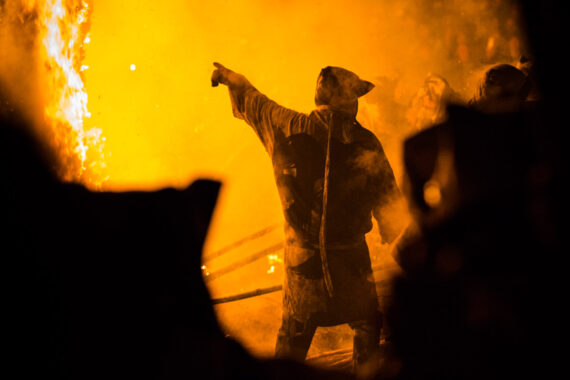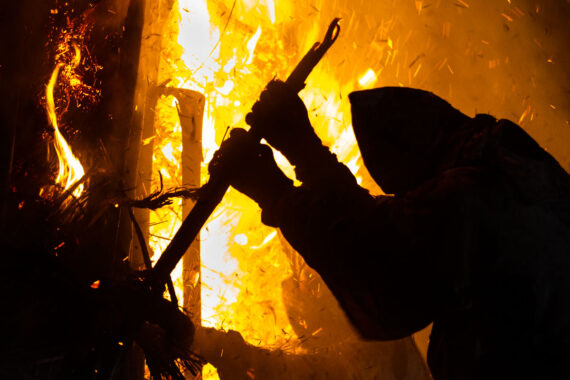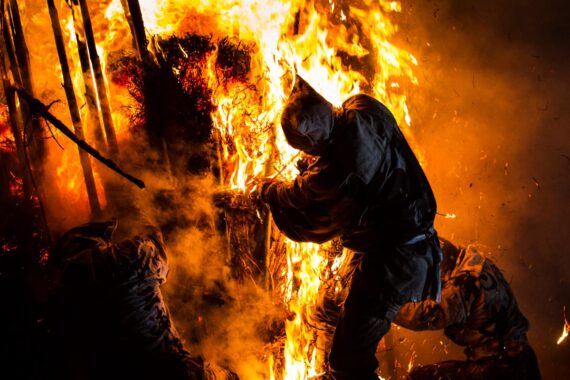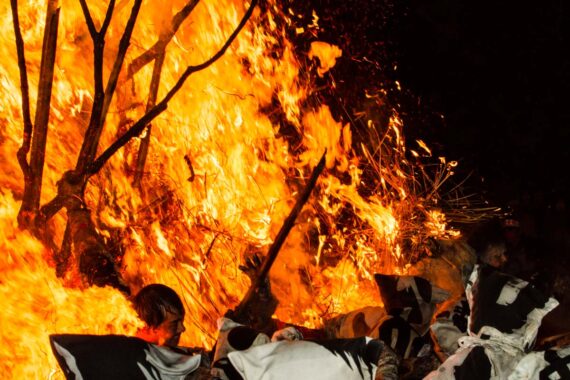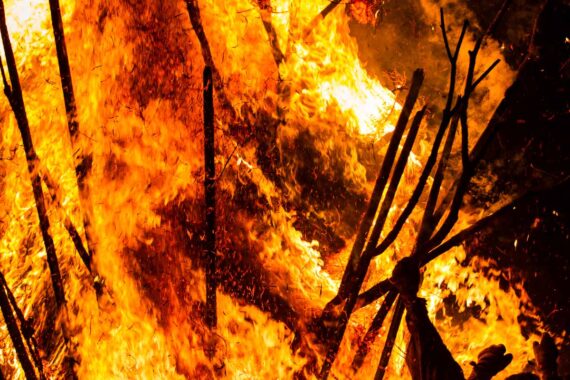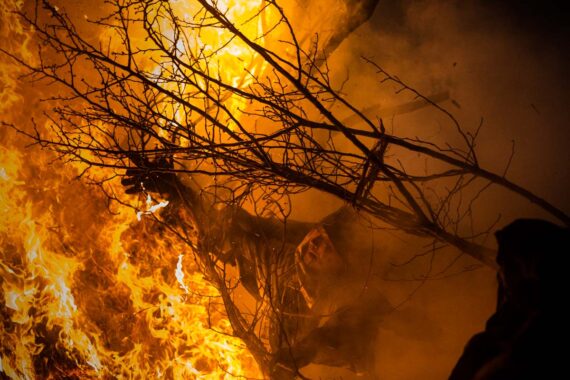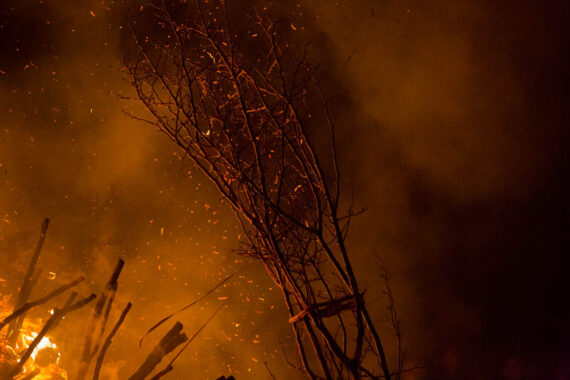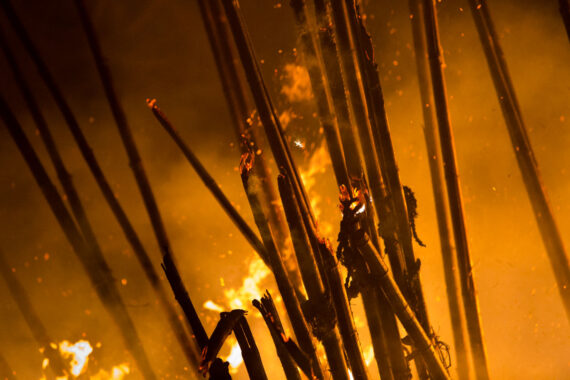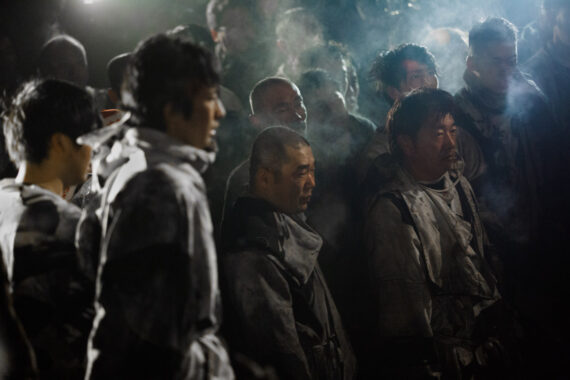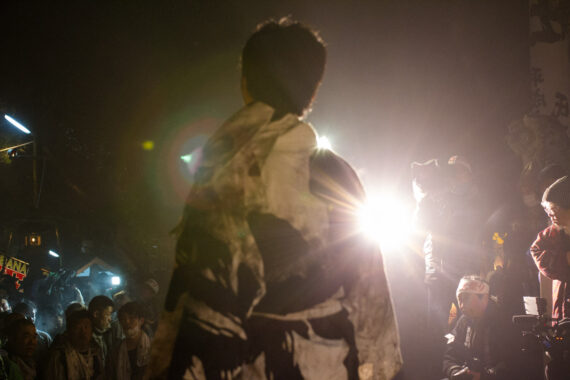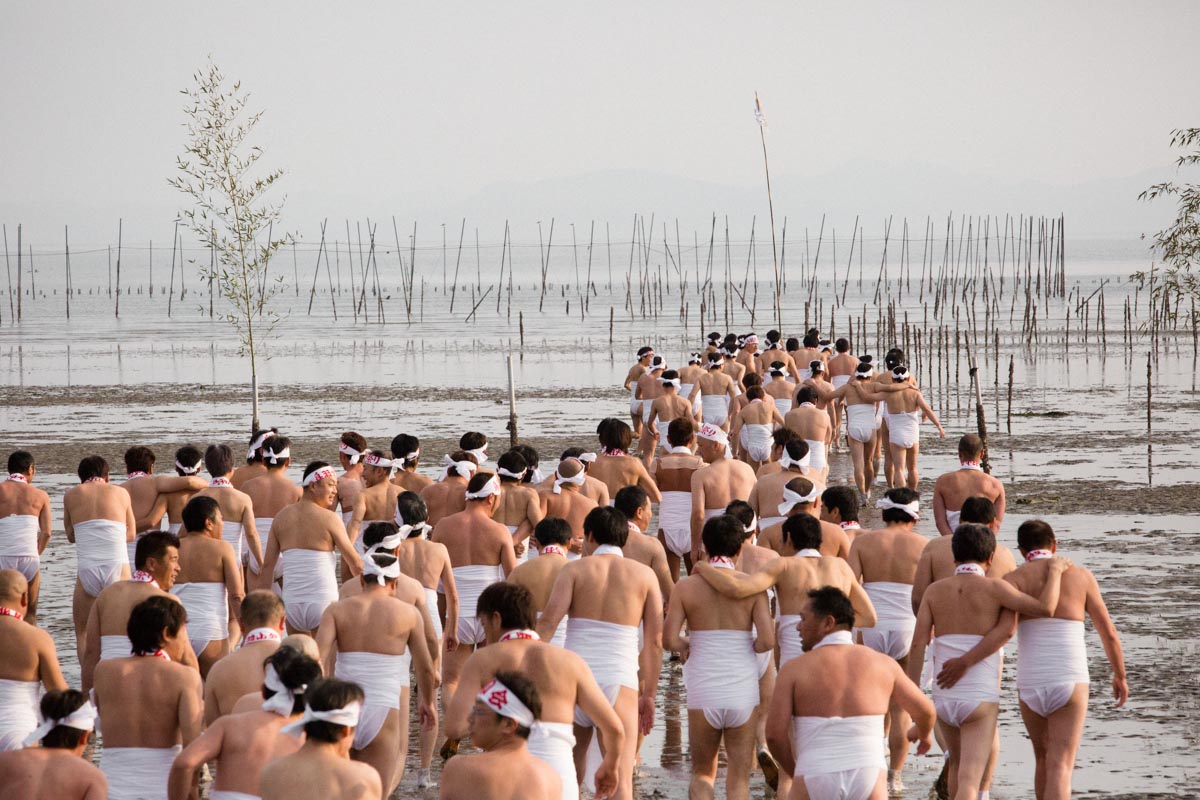
The Great Bonfire of Toba
Photography by Thaddeus Pope
SHARE THIS
Home >> Documentary >> Matsuri >> The Great Bonfire of Toba
One of the most extraordinary festivals in Japan, Toba Dai Kagaribi (The Great Bonfire of Toba) is a designated National Intangible Folk Cultural Property with roots that can be traced back 1,200 years. The purpose of the festival, which takes place in February at the shrine of Toba Shinmeisha near the city of Nishio in the Chūbu region of Honshū, is to forecast the weather and harvest of the coming year by way of a highly ritualised and potentially dangerous competition between two teams of local men – one from the east side of the Toba River and one from the west. The east is known as Kanchi or “Dry Land” and the west is known as Fukuchi or “Prosperous Land”.
The festival incorporates a commonly held belief in Japan that certain years in a person’s lifetime are inauspicious. These years are known as your yakudoshi – unlucky years. Your unlucky years are 19, 33 and 37 if you are female, and 25, 42 and 61 if you are male. In acknowledgment of the potential danger and misfortune that might befall a person during these years, many Japanese people choose to undergo a ritual purification in the middle of a yakudoshi year, and will often visit temples and shrines to pray for better luck. In the example of Toba Dai Kagaribi, two local 25-year-old men (one from Kanchi and one from Fukuchi) are selected to participate in the festival as shin-otoko, or “holy men”. Being selected as a shin-otoko is considered a great honour, as it is believed that shin-otoko bring good fortune on themselves and others.
With an outer frame made from 60 bamboo poles tied tightly together, and a core filled with huge bundles of sun-dried Japanese pampas grass, each of these highly flammable towers stands approximately 5 metres tall and weighs more than 2 tons.
Buy me a coffee…
☕ If you enjoyed this post, click here to buy me a coffee.
🏆 If you would like to support the creation of new work, click here to become a patron.

Thaddeus Pope
Documentary Photographer
Based in Japan, Thaddeus Pope is a photographer, videographer and web/print designer with a passion for human-centred visual storytelling. He is available for assignments in Japan and around the world.
If you would like to get in touch, please use the contact form or email info@thadpope.com. Thaddeus can also be found on social media via the following links.

